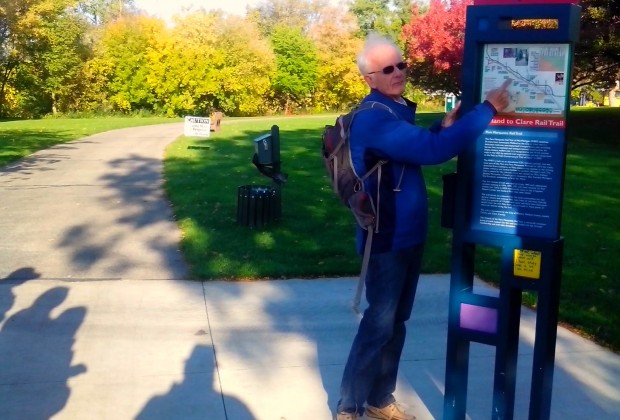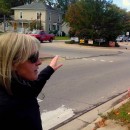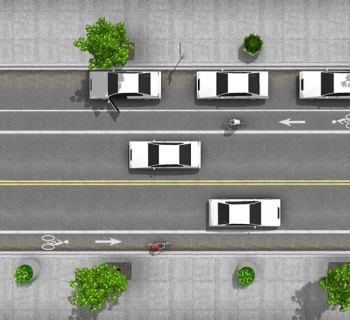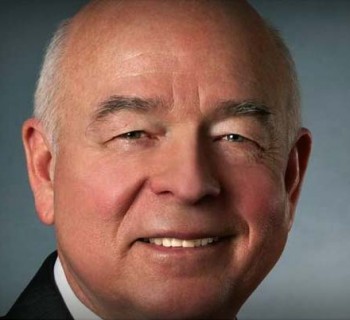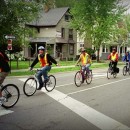
The picturesque Pere Marquette Rail Trail and a wonderful network of bicycle routes drew the Michigan Transportation Odyssey to Midland last October. It's a robust system that has caught the eyes of other groups too; the League of American Bicyclists has recognized the city as a bronze-level “Bicycle Friendly Community”, and the Rails-to-Trails Conservancy has inducted the Pere Marquette into its Hall of Fame.
Spanning roughly 34 square miles, Midland houses more than 40,000 residents and serves as Dow Chemical’s world headquarters. Odyssey travelers visited the Mid-Michigan city to learn about efforts to make transportation infrastructure accessible to different users.
The obvious starting point was the Pere Marquette, the 30-mile paved trail stretching from Midland to Clare, Michigan. A popular destination for rides and runs, it opened in 1993 and attracts over 178,000 annual visitors.
While motor vehicles are prohibited, the Pere Marquette attracts a broad spectrum of non-motorized users, including joggers, cyclists and in-line skaters. With a gently sloping grade and wide path—12 feet across in Midland—the trail is well-suited also for people with assistive devices like wheelchairs.
Different sections of the trail are managed by various city and county authorities. The grassroots group, Friends of the Pere Marquette Rail Trail, keeps them on their toes, monitoring for wear and raising funds to help maintain and develop the pathway.
Dave Waite of Bike/Walk Midland and Friends of the Pere Marquette Trail led the Michigan Transportation Odyssey tour of the pathway.

“When you look at the use of the trail on Saturday and Sunday, it's like a bee hive,” he told Mode Shift. “Go another eight miles to Sanford and again it gets very busy, and then go another eight to 10 to Coleman and it gets really busy, and in between you see these lycra-clad [cyclists] going zoooooooom down between the sections!”
In addition to parks, preserves and bridges, the Pere Marquette passes by Dow Gardens, the Arbutus bog and Northwood University. It also crosses the Tittabawassee River and connects to the Chippewa Nature Trail in Midland via a tridge, or three-way bridge.
Eventually it will be part of a 100-mile Great Lakes Bay Regional Trail system connected to Saginaw and Bay City.
Complementing the rail trail is an extensive system of bike routes plotted out by Bike/Walk Midland (BWM), the city’s non-motorized transportation committee.
The group released its first non-motorized plan in 2009, the same year Midland adopted a Complete Streets ordinance, and updated it in 2013. Building off the Pere Marquette and another trail called the Grand Curve, the plan laid out travel routes and spurred the installation of city bike lanes.
To help people visualize this, they created a map of different bicycle travel options.
"We looked in Midland. There are churches. There are coffee shops. There are tennis centers. There's a Midland community center,” says Waite. “We devised this system of the yellows are the on-road marked bike lanes and the green are unmarked designated bike routes.”
The map is part of a five-to-ten-year effort to get most youth and more residents to walk or bike to school and other destinations. Midland already has an admirable sidewalk system, so while BWM does point out gaps, it sticks mostly to bike issues.
Beyond the map, it sponsors school trainings and a Midland community TV show. It also holds events where participants are asked to draw their preferred bike routes. Those who do can win prizes. This strategy allows BWM to both encourage bicycling and gather data to refine their non-motorized plan.
Recently the group started working with Disability Network of Mid-Michigan to learn more about the needs and whereabouts of people with disabilities.
Speaking with the Odyssey group, Terri Cady of Disability Network praised Midland’s leadership for investing heavily in sidewalks and complimented local and county transit service providers, which offer on-demand service, for keeping an open ear towards people with disabilities. She noted these concerns are a routine topic of conversation in Midland and promised to keep the dialogue going.
“What we see very often are individuals with disabilities wanting to walk from place to place,” she said, “and so whether public transit is a part of it or whether a trail or sidewalk system is a part of that, it’s an important part of enhancing someone’s quality of life."
This advocacy, coupled with BWM’s efforts, makes it easy to understand why the city’s streets are so attractive to many different users. Add in plans to integrate the Pere Marquette, and it appears Midland will continue to be a state trendsetter in non-motorized infrastructure for the foreseeable future.


